Little Greene announces its collaboration, ‘National Trust Papers’, an eclectic collection of wallpapers
These beautiful designs will be a great addition to any home


Little Greene has just announced its latest collaboration, ‘National Trust Papers’, an eclectic collection of contemporary wallpapers based on original designs from the National Trust’s revered property portfolio.
Little Greene has been working with the National Trust since January 2018. The inaugural collaboration, ‘Green’, focused on 20 original paint colors derived from the Trust’s houses and gardens throughout England, Wales and Northern Ireland.
The project has proved so successful that the project has now been extended to include wallpaper ideas, with ‘National Trust Papers’ launched during Paris Déco-Off in January 2020.
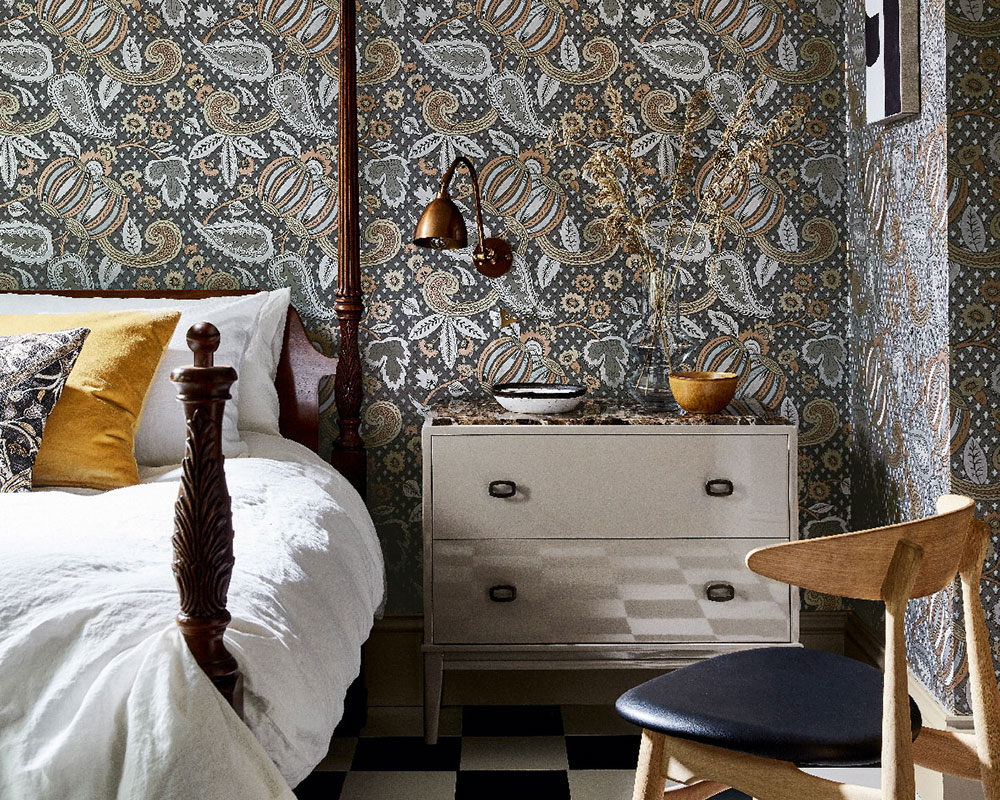
Comprising 40 colourways over seven designs, the collection represents 200 years of timeless pattern, from the early 18th to the early 20th century.
Each wallpaper has been recreated from originals in National Trust properties nationwide, including papers still adorning ancient walls, fragments conserved in archive drawers and even preserved rolls found in the back of an attic.
‘Pavona’ (Erddig) c. 1875
This flamboyant, vibrant peacock design is a beautiful example of late-19th century wallpaper printing. Found on a lobby wall at Erddig in Wales, it was hung in the 1870s, and has the painterly finish of a traditional Chinese silk. Showing peacocks perched on branches, accessorised by flowers, leaves and birds, the subject is typical of wallpapers and fabrics produced to satisfy the British interest in Chinese design. Coloured in eight vibrant ways including elegant pale and bolder dark grounds, and even a shimmering gold.
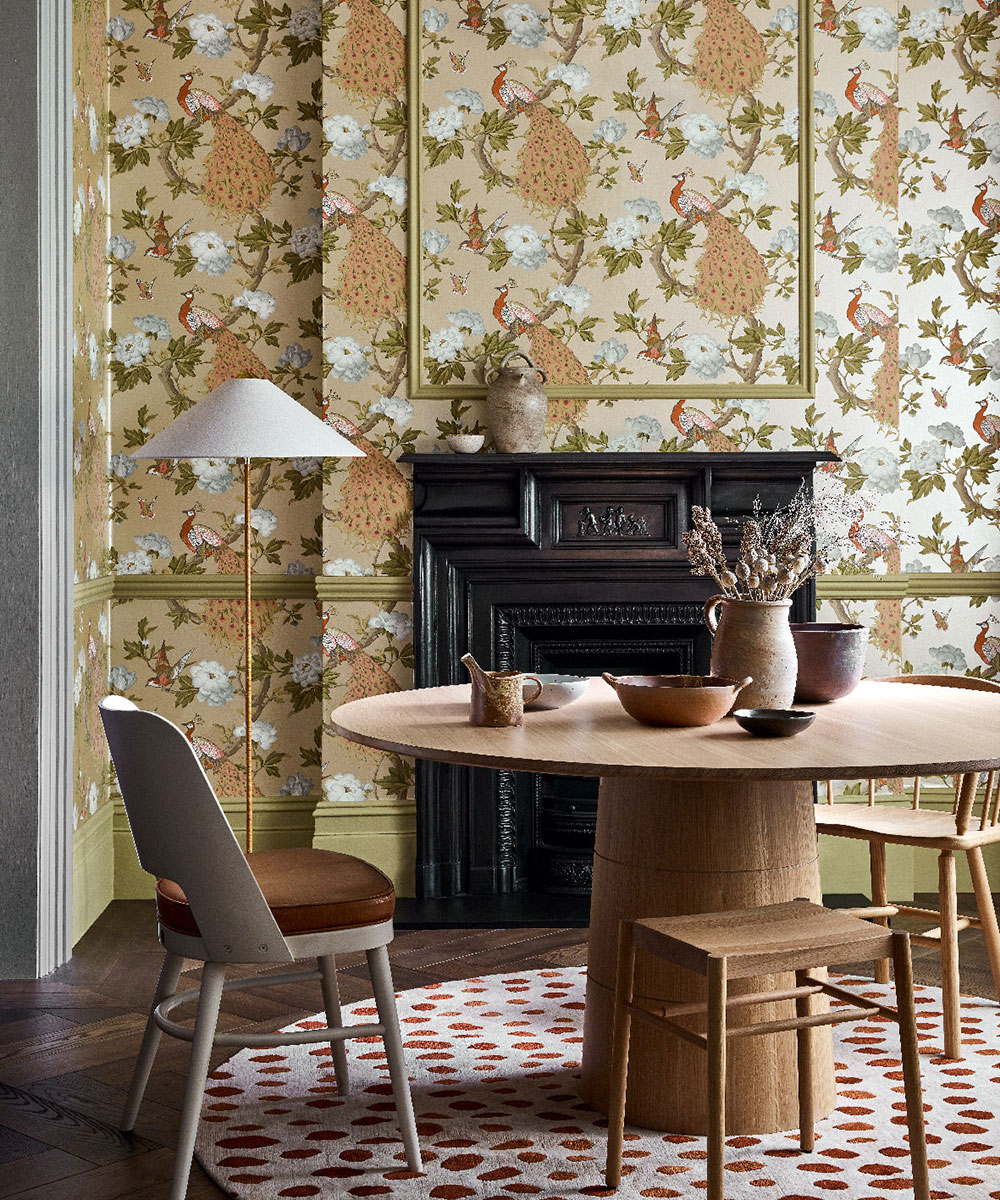
‘Belton Scenic’ (Belton House) c. 1785
The original, much-admired version of this wallpaper can be seen in the Chinese bedroom at Belton House in Lincolnshire. Whilst the paper – a garden party scene, depicted in a combination of printed and hand-painted elements – dates from 1785, it is known to have been hung over 50 years later, in 1840.
Design expertise in your inbox – from inspiring decorating ideas and beautiful celebrity homes to practical gardening advice and shopping round-ups.
The original layout, including human figures, exotic birds, awkward scale, quirky perspective and odd details, has been simplified to give space to the spreading bamboo and charming interaction of birds, butterflies and flowers. Available in three colourways, the horizontal pattern repeats over two standard rolls, making the final panel just over three metres in width.
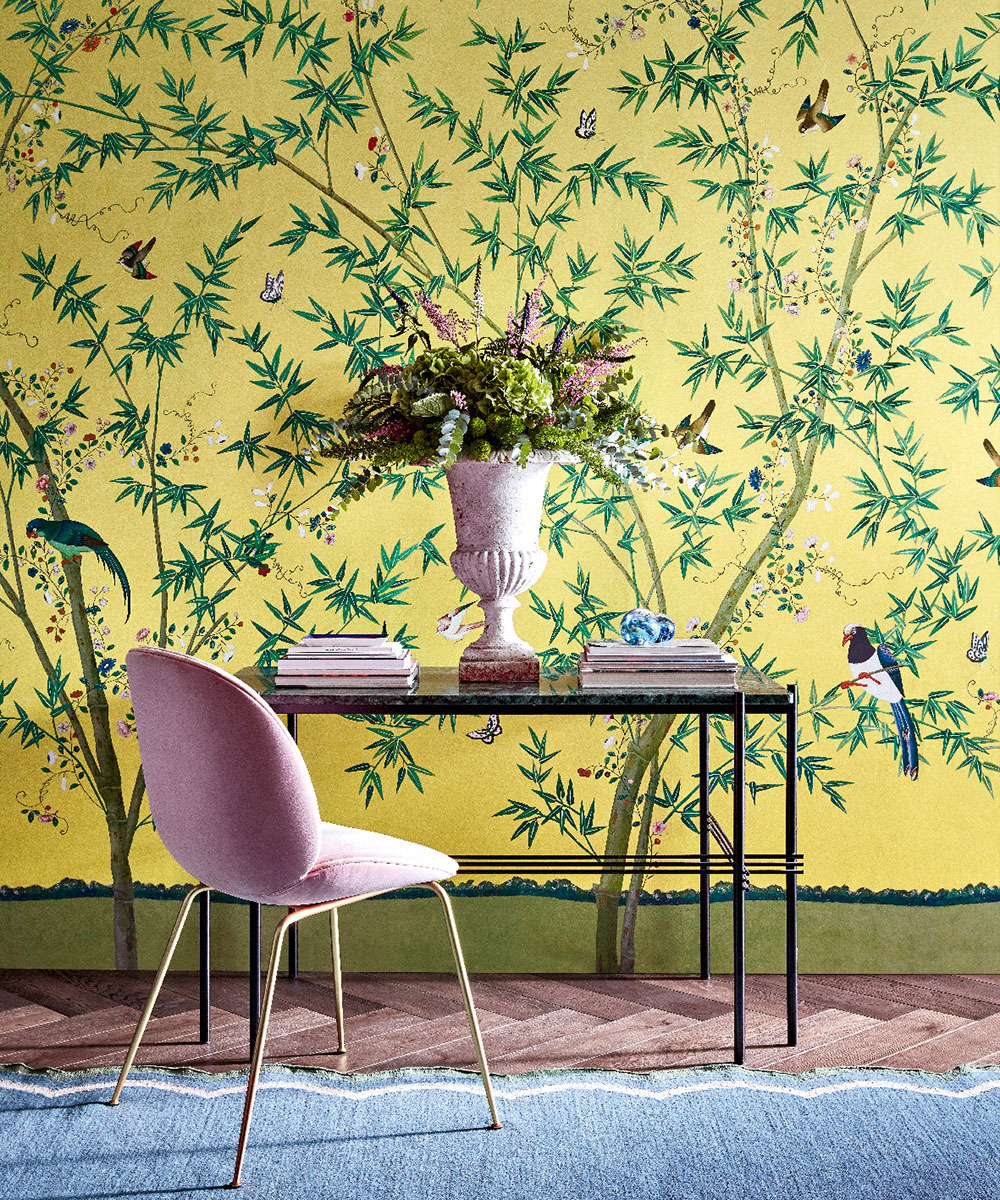
‘Pomegranate’ (Erddig) c. 1715
A rare and very early find, this Baroque design was uncovered by the National Trust, hiding beneath wall-hung tapestries at Erddig in Wales. Block-printed onto handmade paper panels, which would have been nailed directly to the wall (rather than glued), their removal revealed the earliest verified tax-stamp on the reverse. The colourful yellow original has been pared down for one of four tonal colourways. A further three colourways bring versatility to the modern use of this lively paisley design.

‘Achillea’ (Felbrigg Hall) c. 1910
Originally just a small border design, a fragment of which is kept at Felbrigg Hall in Norfolk, this pattern has been completely transformed in scale. Depicting silhouetted stems and flowerheads of yarrow, or perhaps the locally-abundant marsh sow-thistle, the style is distinctly Art Nouveau and the flat colours are typical of a screen-printed design. Besides a radical shift in size, the stunning colour treatment of Achillea’s five modern colourways make this suitable as either a backdrop or focal point for contemporary rooms.
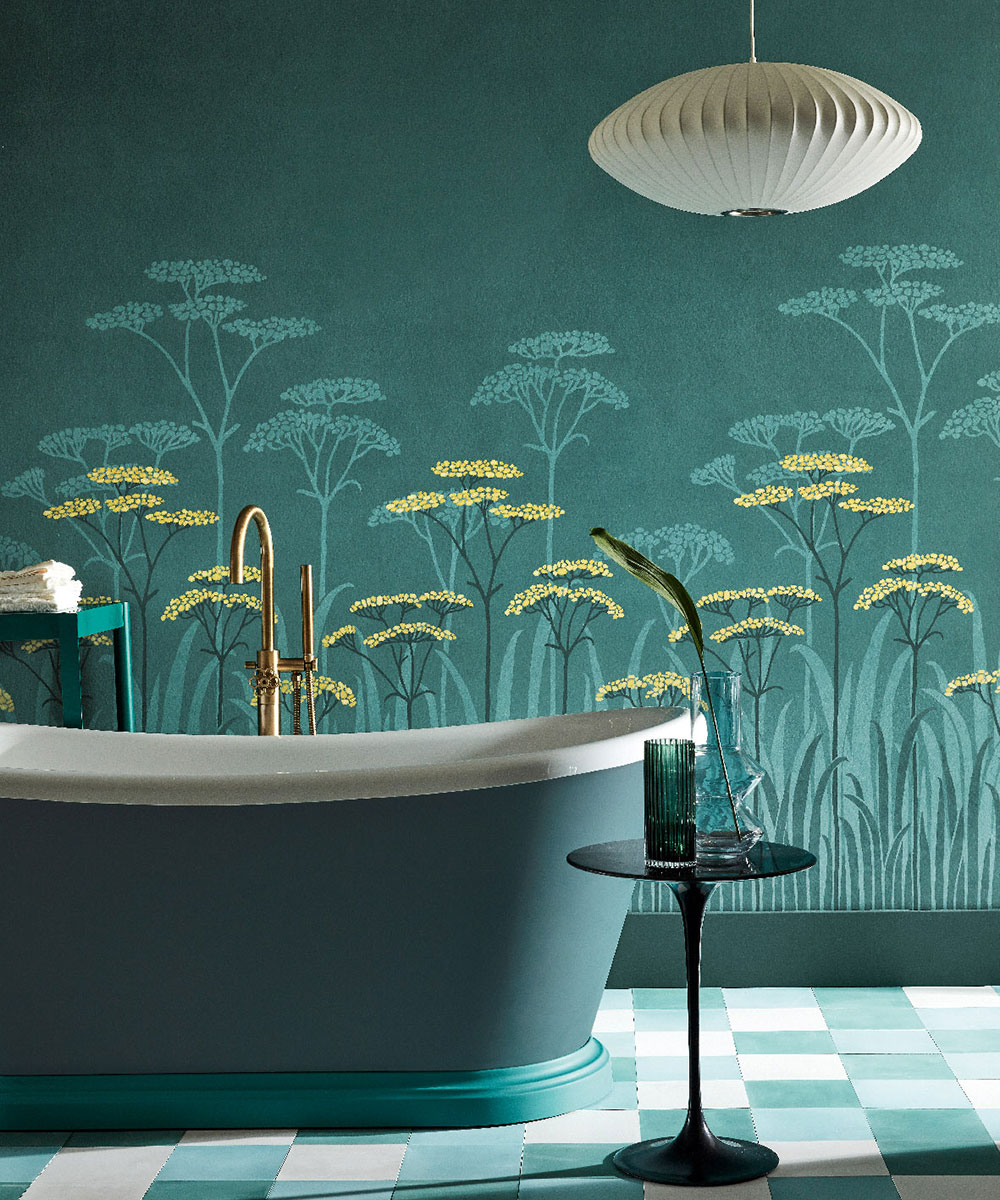
‘Stag Trail’ (Greyfriars House and Garden) c. 1720
This classic Georgian design can be seen at Greyfriars, a medieval timber house in Worcester. The property’s 20th Century owner, Elsie Moore, acquired some unused rolls from a rectory attic in nearby Pershore, and displayed sections of them as framed panels in her bright yellow dining room. Suspecting that the turquoise pigment in the ground could have been arsenic, she covered the panels in plain brown paper to prevent the unwitting poisoning of either herself or her guests. The holes made by the pins she used can still be seen today, but the paper is, thankfully, (safely) back on show.
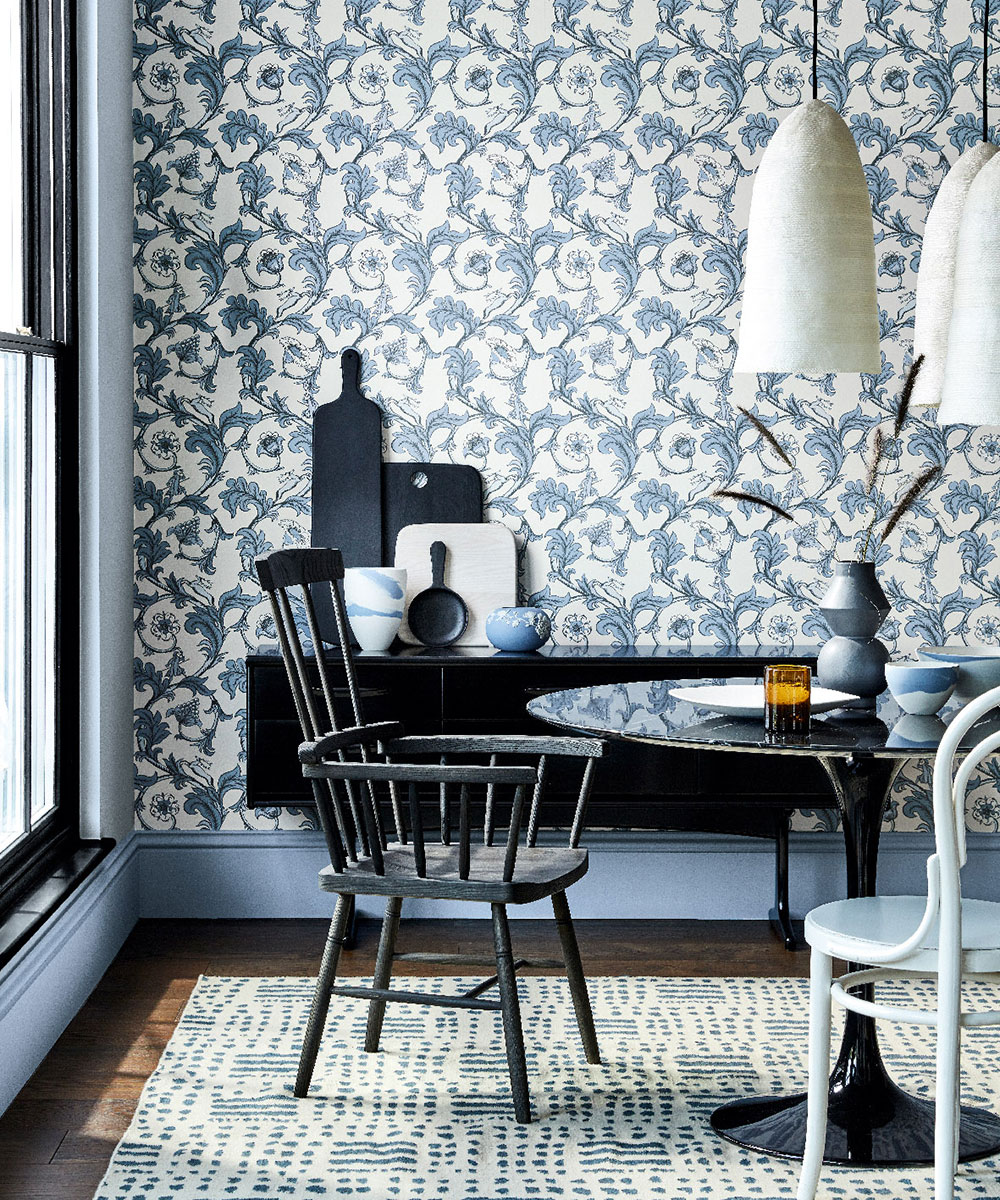
‘Hencroft’ c.1890
The prolific output of William Morris and the Arts & Crafts movement is widely evident within the National Trust portfolio, not least at Morris’s own London home ‘Red House’. He was a visitor, ‘student’ and 19th Century influencer at the Hencroft Works in Leek, where his friend Thomas Wardle taught and experimented with dyeing fabrics and printing papers with natural inks. This design – a stitched, repeating pattern of stylised cowslips – was found at Wardle’s school of embroidery in Leek, and has been effortlessly translated into a wallpaper design in eight stunning colourways.
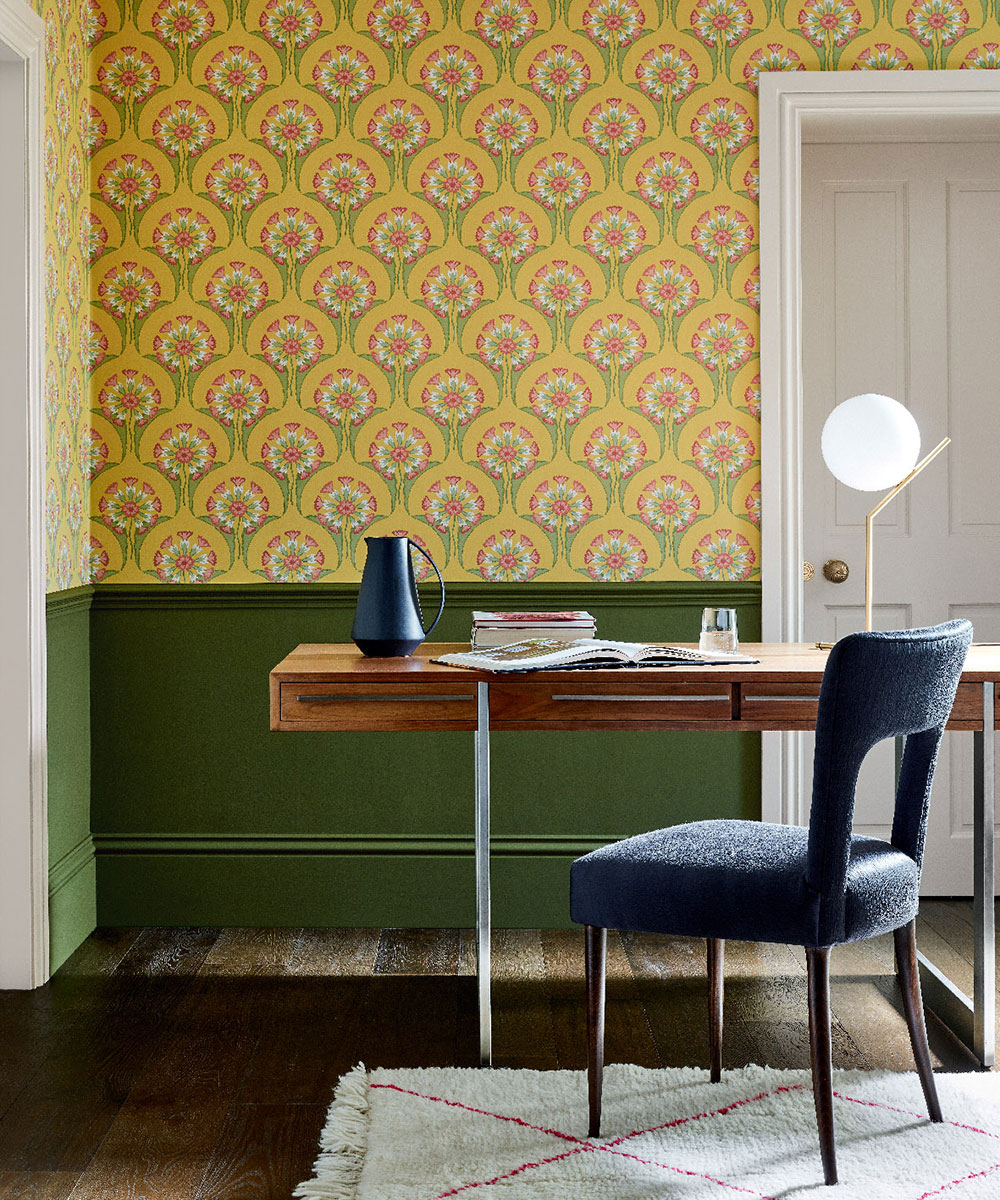
‘Clutterbuck’ (Newark Park) c. 1805
Built for a courtier of Henry VIII, Newark Park is a Tudor hunting lodge in the Cotswolds, where just a fragment of this small leaf design survives. The simple pattern featured two varying shades of green on a white satin background, creating the illusion of woven fabric and, interestingly, has been matched to a paper from the clock tower at Hampton Court Palace.
The design derives its name from James Clutterbuck, who acquired Newark Park in the mid 18th Century, though this paper is early 19th Century in origin. Five contemporary colourways include softer contrasts and bolder primary shades on off-white, replicating the visual strength of the original design.
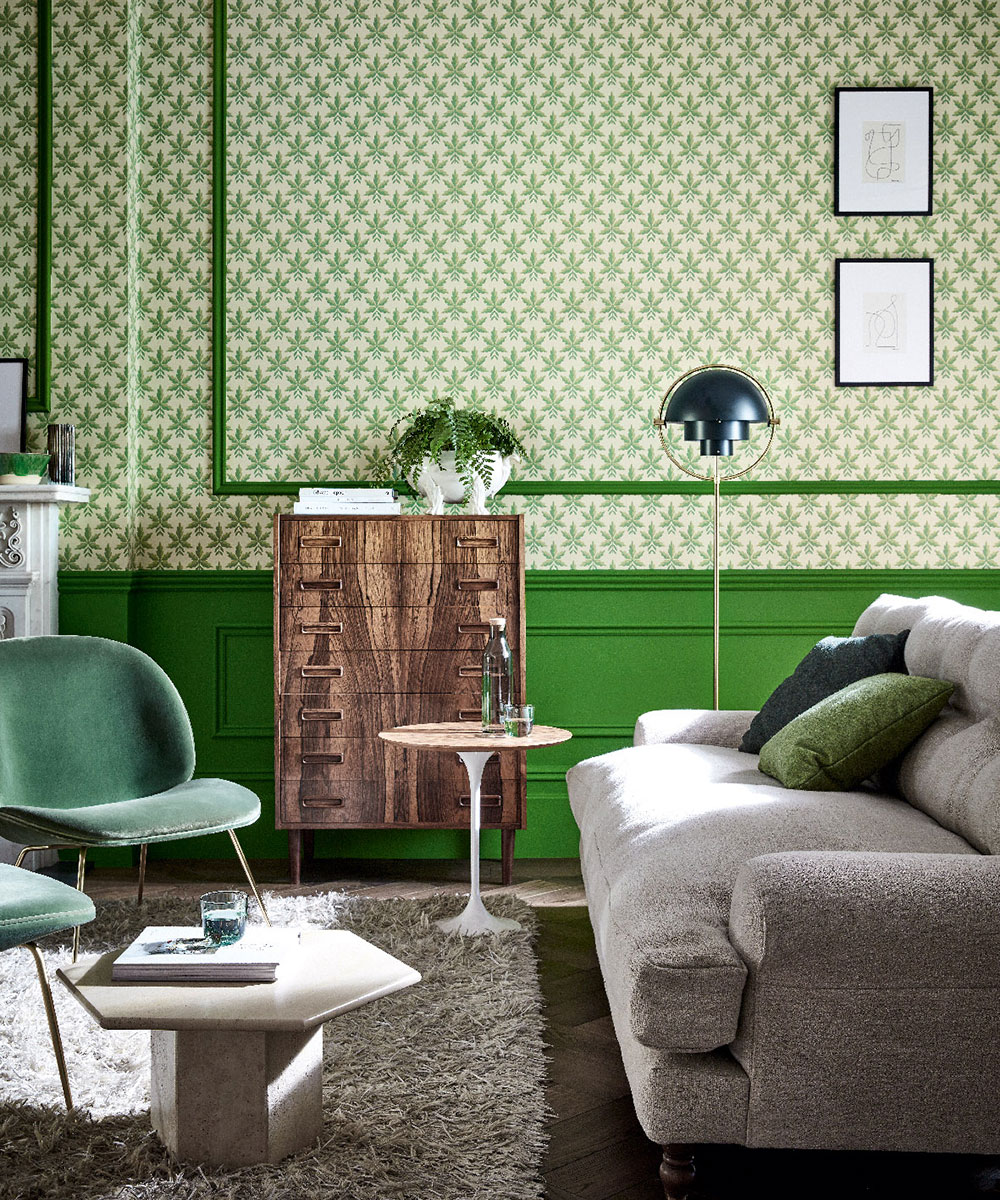
'We’ve already enjoyed considerable success with the ‘Green’ paint range, which is proving overwhelmingly popular. To have the opportunity to add wallpapers into the mix is both exciting, challenging and an honour. With more than 350 significant historic interiors in the National Trust’s care, we feel privileged to have access to such a prestigious and comprehensive mix of decorative styles,' says Ruth Mottershead, Little Greene’s Marketing Director.
A contribution from the sale of every roll of Little Greene wallpaper will be made in support of the National Trust’s conservation work, to ensure the nation’s historic houses, gardens and open spaces can be enjoyed for generations to come.
Little Green, littlegreene.com

Jennifer is the Digital Editor at Homes & Gardens, bringing years of interiors experience across the US and UK. She has worked with leading publications, blending expertise in PR, marketing, social media, commercial strategy, and e-commerce. Jennifer has covered every corner of the home – curating projects from top interior designers, sourcing celebrity properties, reviewing appliances, and delivering timely news. Now, she channels her digital skills into shaping the world’s leading interiors website.